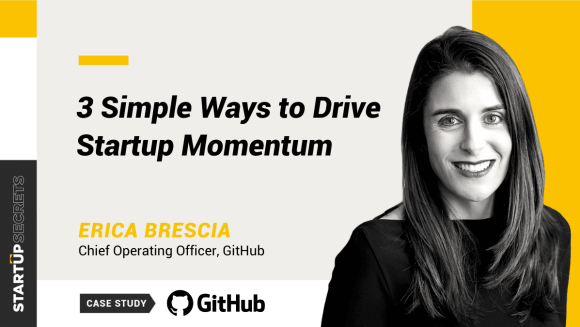So, your board is asking to see a budget or a forecast for your startup, or you need to present an updated business plan. Whether it seems daunting, exciting, or it just feels like a pain, planning is an important business practice.
But for an early-stage startup, a detailed plan might feel too rigid. After all, things change quickly, and you may be testing new strategies and striking out a lot. Chances are your plan will become outdated the day after you publish it. So what’s the point?
Despite a startup’s ever-evolving nature, planning gives you a set of expectations that you can operate against. It’s an opportunity to take stock of where you’ve been and look ahead to where you want to go, so you can build your company for the future.
As you start to plan out a budget or forecast, here are a few things to keep in mind.
The Big Picture of Startup Planning
The long-term goal for many startups is to get to a place where the business is predictable, scalable, valuable, and profitable. Companies go public when they achieve this mastery of their business.
“Without mastering your business, you won’t understand your customers, so you won’t build the right products, so you won’t bring it to market effectively,” says James Orsillo, CFO of Underscore VC. “There are a whole bunch of things that you just can’t do.”
This mastery develops over time, and it enables you to identify your key value drivers so you can grow at a healthy, scalable, predictable rate. With mastery, it’s clear what levers and buttons will produce consistent results. Establishing revenue certainty is one of the most important tasks to establish predictability. That’s where planning and forecasting for startups come in.

Planning is a tool to continuously align the sustainability of your company with your optimal growth rate. It’s an ongoing process that evolves with your business; you’re always planning—constantly reviewing, revising, and recalibrating.
Planning Priorities by Stage
Especially in the early days, planning is about setting targets and being able to hit them. But over time, you’re aiming to become more predictable, with reliable growth and performance. As you look ahead, you can expect some of the following priorities:
- Seed: At this stage, you may be working to find Product-Market Fit and gain initial revenue traction. This could include customer discovery and fine-tuning your product. You’re probably still figuring out how to write a plan. What are your revenue drivers? What are your expenses? Your plan will outline how you’ll go about getting this initial traction.
- Series A: Assuming you’ve reached PMF and you have some paying customers, you’ll start to build a healthy business around your product. At this stage, this could include generating sales momentum, building out your team, and fine-tuning your unit economics. “It’s more critical at this stage to be growing gangbusters on the top-line, but cash management should always be prominent on an executive dashboard that’s regularly reviewed by management,” says Eric Goode, VP of Finance at Hi Marley, which raised its Series A earlier this year (co-led by Underscore VC and True Ventures).
- Series B: You’ve got the start of a healthy business. Now it’s time to double down on revenue growth. How many sales reps do you have? What’s their quota? How many of them hit quota? Your plan will likely outline how you’ll accelerate growth, while maintaining business health.
- Series C +: Once you’re hitting impressive growth targets, you’ll keep scaling. Which markets will you hit? Will you expand to new geographies? Will you release new products? Who will you need to hire to make this happen? Your plan will underwrite this growth strategy.
By the time you’re at a later stage, you’ll have mastered a sense of predictability over your business. “Eventually, you’ll be able to say, ‘If I put in a dime, I’ll get out a quarter. If I push this lever, I’ll get this result’” says James.

The Planning Process for Startups
“Early on when we had our first board meeting, I remember laboring for days over the board deck and deciding what to present,” says Jason Purcell, CEO of Salsify. “Then after that first meeting, I realized how stupid that was. We should just talk about what’s on our minds. From then on, we decided to use the board meeting for us.”
The same is true of planning. Your board will likely be asking for a budget on an annual basis. They’ll want to see your strategy and how it plays out in financial forecasts. But the planning and forecasting exercise is for yourself and your team.
Watch out: “Especially in the really early days, startups tend to be overly optimistic about sales,” says James. If you’re trying to hit a certain revenue target to woo investors or impress your board, you may be tempted to set an aspirational goal. “Then you’ll miss your targets, not have enough cash flowing in, and you’ll need to raise additional funds to keep the lights on.”
Always remember: This is a continuous process. Whatever plan or budget you create, you’ll be constantly reviewing, revising, and recalibrating.
As you map out your plan, consider the following guidelines:
1. Think Big-Picture and Long-Term
Of course, you won’t know everything. But you’ll need a sketch of your long-term strategy and goals. For some startups, that could include planning two funding rounds ahead.
Your investors will likely ask: What will you use this cash for? To answer that, you’ll need to know your key drivers of growth. Perhaps you need to out-build a competitor. Maybe you need to out-sell a competitor. Think of your long-term strategy as a cross-country trip. What’s your destination, and what path will you take?
This remains true even for public companies. “I think that there is a belief that public companies are focused solely on the current quarter or current year performance,” says Kate Bueker, CFO of HubSpot. “Good planning is anchored in a long-term strategy, and the budget process is about how to take the right steps in that direction.”

2. Outline Key Milestones
Thinking back to your best lever of growth, what will be your key milestones? This could include acquiring a certain number of customers, raising a round of fundraising, or making an acquisition.
This sounds like, “To reach X, we need to hit A, B, C, and D milestones. Here’s how we think we’ll get from A to B, then B to C, then C to D.
If your startup is a plane, and your cash runway is fuel, how far can you fly?

3. Take Stock of Resources
To continue with the cross-country trip analogy: think about your cabin crew and equipment, estimate what they can accomplish, and decide what other resources you’ll need for a low-turbulence flight.
What do your current resources offer?
- People: Who are your top performers, low performers, and those in between? What can they realistically accomplish in the next year? For example, if you’re a Founder/CEO who’s heavily involved in the sales process, are you really going to have the capacity to hit an aggressive sales target?
- Infrastructure: Think through systems, processes, and technology. What’s working? What’s not?
- Data: What new information have you collected? What have you learned?
What do you want to do with your resources?
- Reflecting on your path to get from point A to B, what resources will you need to accomplish this goal? Perhaps you need to shift your positioning in order to appeal to customers up market. What people, infrastructure, and data will you need to make this happen?
What resources do you need that you don’t have?
- Will your current resources carry you down your outlined path? If not, who do you need to hire? What cash do you have to hire them? From here, you can build out a hiring plan accordingly.

4. Think Through Contingencies
Once you’ve outlined your plan, strengthen it by thinking through contingencies. “It’s sometimes easy to rationalize why you’ve missed your target and accept a miss,” says James. “But if you can unemotionally recalibrate through contingency planning, you’ll make smart decisions.”
For example, Salsify’s 2020 forecast was off because of the impacts of Covid-19. The team’s detailed contingency planning enabled them to act decisively during a challenging time. “We were able to quickly come up with a model that did not take a lot of work,” says Mary Jefts, CFO of Salsify. “Having it already exist helped take the emotion out of what it would mean for the company and our teams.”

5. Select Your Metrics
Remember—planning is all about becoming a master of your business. That includes a holistic view of its health. There are plenty of SaaS metrics you can track, however, metrics don’t matter unless you can build a business.
“Metrics are the diagnostics of your business,” says James. As a starting point, take a look at these top SaaS metrics and determine which are most relevant to your business.
ARR tends to be a critical metric to track. “First and foremost, ARR is most important for us,” says Eric. “More specifically, the levers within ARR include New, Expansion, and Churn. It’s important to align on a reasonable mix of New and Expansion ARR throughout the plan year. This dictates how we approach hiring across the org, and fund marketing programs and customer success.”
The same is true even for public companies. “Our north star metric is net-new annual recurring revenue (NNARR) growth. It is the leading indicator of subscription revenue growth,” says Kate.
Watch out: While ARR is an important metric to measure growth, be sure to monitor the health of your underlying business in relation to other metrics. “Having strong ARR growth can be a sign of strength and momentum,” says James. “But if your Customer Acquisition Cost (CAC) is sky high, and your Gross Margins are bad, you’ll be hemorrhaging money underneath.” It’ll be extremely difficult to build a sustainable business that way. If your business isn’t healthy, “every customer win is a loss,” he adds.
6. Track Comparables
Once you’ve outlined your plan, consider looking at comparables—companies with a similar business model in a similar space that have reached one of your milestones.
“Given our growth rates and our belief that Salsify has the potential to be a public company, we picked a list of IPO comparables—enterprise-class SaaS companies that had gone public,” says Jason. “We look at up to three years of their financial data, and based on our growth rate, revenue, and expenses as a percentage of revenue, we compare ourselves against their metrics. These comparables are a way to validate our progress against our three-year plan.”

Pulling it All Together
Especially as your business grows, collaboration and accountability become increasingly important. “At the Series A stage, more departments have been created, and therefore more leaders have emerged,” says Eric. “The ability to build a detailed, iterative plan with business leaders allows for more top-line and bottom-line accountability.”
Consider creating guidelines for what each department or team can do this year. That way, you can involve your executive team in the planning process, which helps ensure team cohesion and clarity across the organization.
“A good year in planning is when the business leaders feel ownership of the operational drivers required to hit the budget,” says Kate. “If I do not hear the words ‘finance plan,’ I know it’s been a good year.”
If you focus on priorities that are appropriate for your stage, then remember to 1) think big-picture and long-term, 2) outline key milestones, 3) take stock of your resources, 4) think through contingencies, 5) select metrics, and 6) keep an eye on comparables, you’ll have a strategic guide to navigate startup chaos.
And while plans typically start on January 1, remember to stay flexible. The best companies are always forecasting, reviewing, and recalibrating as they gain mastery over their business.












